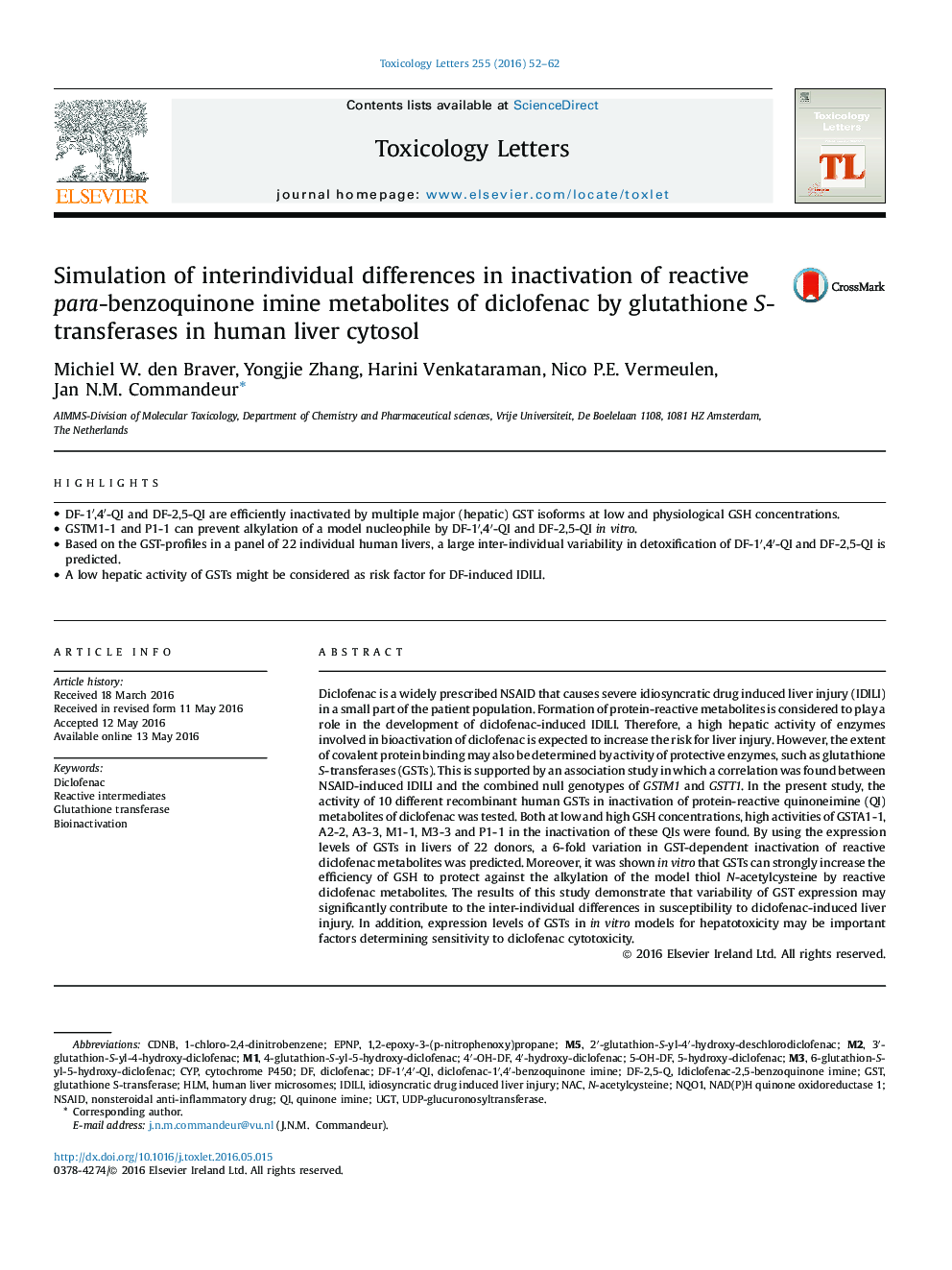| کد مقاله | کد نشریه | سال انتشار | مقاله انگلیسی | نسخه تمام متن |
|---|---|---|---|---|
| 2598350 | 1562618 | 2016 | 11 صفحه PDF | دانلود رایگان |

• DF-1′,4′-QI and DF-2,5-QI are efficiently inactivated by multiple major (hepatic) GST isoforms at low and physiological GSH concentrations.
• GSTM1-1 and P1-1 can prevent alkylation of a model nucleophile by DF-1′,4′-QI and DF-2,5-QI in vitro.
• Based on the GST-profiles in a panel of 22 individual human livers, a large inter-individual variability in detoxification of DF-1′,4′-QI and DF-2,5-QI is predicted.
• A low hepatic activity of GSTs might be considered as risk factor for DF-induced IDILI.
Diclofenac is a widely prescribed NSAID that causes severe idiosyncratic drug induced liver injury (IDILI) in a small part of the patient population. Formation of protein-reactive metabolites is considered to play a role in the development of diclofenac-induced IDILI. Therefore, a high hepatic activity of enzymes involved in bioactivation of diclofenac is expected to increase the risk for liver injury. However, the extent of covalent protein binding may also be determined by activity of protective enzymes, such as glutathione S-transferases (GSTs). This is supported by an association study in which a correlation was found between NSAID-induced IDILI and the combined null genotypes of GSTM1 and GSTT1. In the present study, the activity of 10 different recombinant human GSTs in inactivation of protein-reactive quinoneimine (QI) metabolites of diclofenac was tested. Both at low and high GSH concentrations, high activities of GSTA1-1, A2-2, A3-3, M1-1, M3-3 and P1-1 in the inactivation of these QIs were found. By using the expression levels of GSTs in livers of 22 donors, a 6-fold variation in GST-dependent inactivation of reactive diclofenac metabolites was predicted. Moreover, it was shown in vitro that GSTs can strongly increase the efficiency of GSH to protect against the alkylation of the model thiol N-acetylcysteine by reactive diclofenac metabolites. The results of this study demonstrate that variability of GST expression may significantly contribute to the inter-individual differences in susceptibility to diclofenac-induced liver injury. In addition, expression levels of GSTs in in vitro models for hepatotoxicity may be important factors determining sensitivity to diclofenac cytotoxicity.
Journal: Toxicology Letters - Volume 255, 25 July 2016, Pages 52–62